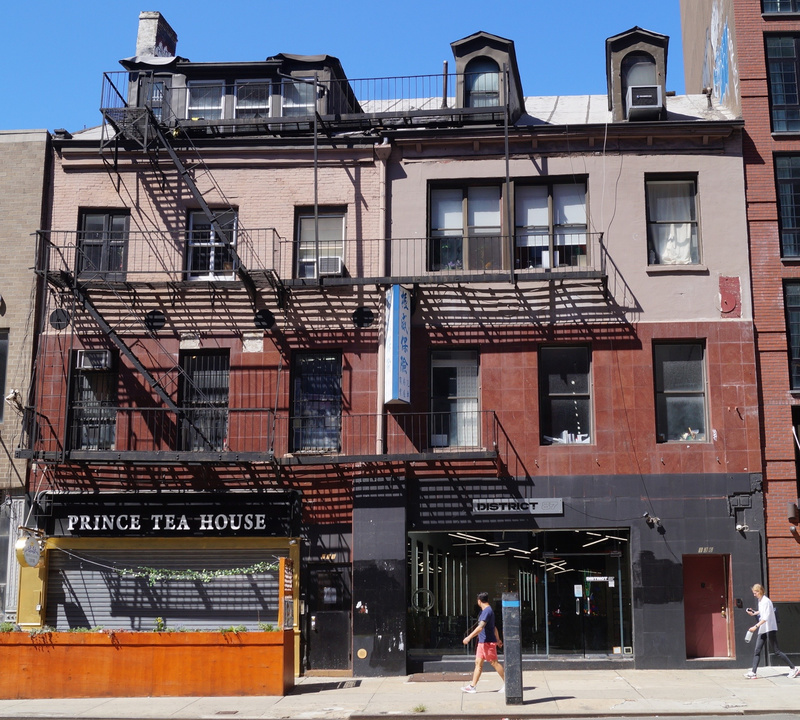4. 134-136 Bowery, Little Italy

The two structures are a couple of the oldest in New York City. The homes were built in the late 1700s by Samuel Delaplaine, a member of a French Huguenot family with roots in Dutch New Amsterdam. Samuel and his wife Phila Pell were Quakers and abolitionists. From 136 Bowery Lane as it was known at the time, Samuel wrote an anti-slavery manifesto. The wealthy family also donated some of their land to St. Philip’s, New York City’s first African American Episcopal church, and they donated land on Christie and Rivington streets for an African cemetery.
In the 1800s, 134 was home to abolitionist Rev. Spencer H. Cone. The descendants of Samuel and Phila who continued to live in the homes for generations carried on their abolitionist legacy. Charlotte Delaplaine and her daughter Phila Amelia were members of one of NYC’s most prominent women’s anti-slavery societies, a Quaker-owned bookstore at 134 was run by abolitionists Effingham and Lewis H. Embree who sold Abolitionists’ works and printed anti-slavery materials, and it believed that boarding house-keeper Lucy Gilpin helped Underground
Railroad “conductor” Isaac Hopper harbor fugitive slaves. A proposal for landmark designation has been submitted to the Landmarks Commission.
5. African Free School: 135-137 Mulberry Street, Little Italy
The African Free School system was founded in 1785 as a segment of the New York Manumission Society, an organization that supported the abolition of slavery in the United States. The society in 1785 helped pass a New York state law prohibiting the sale of enslaved people sent to the state, preceding the national law prohibiting the slave trade by 23 years. The school began as a one-room schoolhouse that opened in 1794, supported by donations. The school grew into a new building on William Street in 1815, followed by a larger building on Mulberry Street. Around 1,400 students were enrolled in seven different school buildings at the school’s peak.
In the early 1830s, the school replaced its white teachers with Black teachers, especially after a controversial incident in which its leader Charles Andrews advocated the idea that Black Americans should set up a colony in Africa. Andrews was ousted after a large boycott, and eventually, the school was integrated into the city’s public school system. Many prominent members of the African American community went to the school, including James McCune Smith, the first licensed African-American doctor and active abolitionist; Patrick Reason, a famous engraver; and Henry Highland Garnet, an abolitionist, orator, and distinguished Presbyterian minister.





